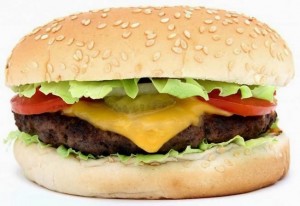Your new venture is catching fire and you need to ramp up operations quickly to handle demand. Where should you look for pointers? Try McDonald’s, Burger King or Wendy’s.
So what happens when the time comes for a start-up to scale in a big way? Suddenly the game changes from “tinkering” to “ramping,” generating volume quickly to establish market position and cash flow. It may sound silly to high tech entrepreneurs, but fast food franchises offer unique insights—they’ve made scaling up a science. Intel CEO Andy Grove looked closely at McDonald’s. In the late 1970’s, he believed Intel’s success depended on making their embryonic microprocessors as reliably as hamburgers, saying “We have to systematize things so we don’t crash our technology.” He kept a hamburger box on his desk with a mock logo, McIntel, to remind everyone of the strategy to grow with profitable scale.2
1. Simplicity. Ordering “off-menu” may be fine for high-end restaurants, but fast food stores limit choice to what’s on the menu. Subway’s deli-style assembly and Burger King’s “Have it your way” only apply to a narrow range of options. Lesson: To scale, new companies must limit choices in the product offering. In the Validation stage, start-ups often “pivot,” experimenting with the product and pricing before they find something that sells. But every new version comes with added complexity, time, and hidden cost—documentation, training, software, accounting, and support. Pick your target; you can’t be all things to all people, so choose ONE profitable segment and stick to it. Rationalize your product line so that at least 80% of your sales come from just a few versions, and resist the temptation to add more. Product simplification is better for sales, too. Studies show too many choices confuses people, slows decision making and lowers satisfaction.3
2. Standardization. In the fast food world, uniformity in supplies, equipment, training, software, and work processes promote consistency and quality, no matter where the franchise is located. Standardization also leads to economies of scale, which allows franchisers to improve performance and lower costs in their supply and distribution chains. Customers value predictability, which causes repeat visits, recurring revenue, and brand reinforcement. Lesson: As sales gain traction, consistency becomes essential to grow profitably and keep customers coming back. In the Efficiency stage, further refine product specifications, value propositions, and delivery processes, documenting best practices. Redesign if necessaryto meet financial targets. Implement standard metrics and process checks to ensure consistency and quality. Consolidateanything that gives you purchasing leverage.
3. Leadership. An industry expert states that if a franchise has a proven business concept with sound training and support, 40% of a franchisee’s success will come through their own hard work and talent.4McDonald’s is renowned for careful selection and training of its franchise owners. Applicants must demonstrate past business success and financial resources (a new store typically requires a $1M+ investment). If they make the cut, they spend three days in a McDonald’s restaurant, working and learning about the business. If they advance, franchisees must then spend a nine months at Hamburger University before opening a store.5Lesson: Good leadership and development are essential for ramping up. Growing companies tend to promote from within and skimpon management training. As a result, teams struggle and executives spend valuable time firefighting. In the Scale stage, look beyond top technical skills and choose leadership experience or attributes instead. Then, take sufficient time to develop the knowledge and skills required for good management.
4. Strategic Management Systems. Opening new stores is a key business process for franchisers, meaning they take a systematic approach to planning, screening, contracting, implementing, and supporting new franchises. They deploy advanced Point of Sale (POS), staffing, and inventory management systems in each store to track real-time metrics, fill work schedules, and optimize supply chains. Visibility to rich data in turn facilitates learning and adjustment at corporate headquarters. Effective management and communication methods also promote execution across a distributed network. Many franchisers use regional or district managers to continually communicate, coordinate changes, and resolve issues with franchisees. Lesson: Entrepreneurs must develop mature management systems to support expansion during the Scale stage. Create a deployment plan and develop the right infrastructure. Define a small set of the most important metrics and implement systems to track, analyze, and report them. Develop enterprise-wide planning, execution, and review practices to align the increasingly complex organization, drive changes, and institute continuous learning and improvement.
Start-ups are by nature quick-moving and creative, but adopting disciplines like those used by fast food franchises makes growth rapid and profitable. Making this transition is critical for early stage companies, and high volume operators can offer important lessons for every growing enterprise.
1. Compass blog: cracking the code of innovation, 2012. http://blog.startupcompass.co/tag/lean%20startup
2. V. McElheny, 1977. “High Technology Jelly Bean Ace,” New York Times.
3. B. Schwartz, 2005. The Paradox of Choice: Why More is Less, Harper Perennial, ISBN 0060005696.
4. G. Nathan, 2012. “Best Practice in Franchisee Selection,” Franchise Relationships Institute. http://www.franchiserelationships.com/articles/BestPracticesinFranchiseeEvaluation.html
5. L. Magloff, 2013. “What You Need to Open a McDonald’s,” Chron http://smallbusiness.chron.com/need-open-mcdonalds-10513.html

